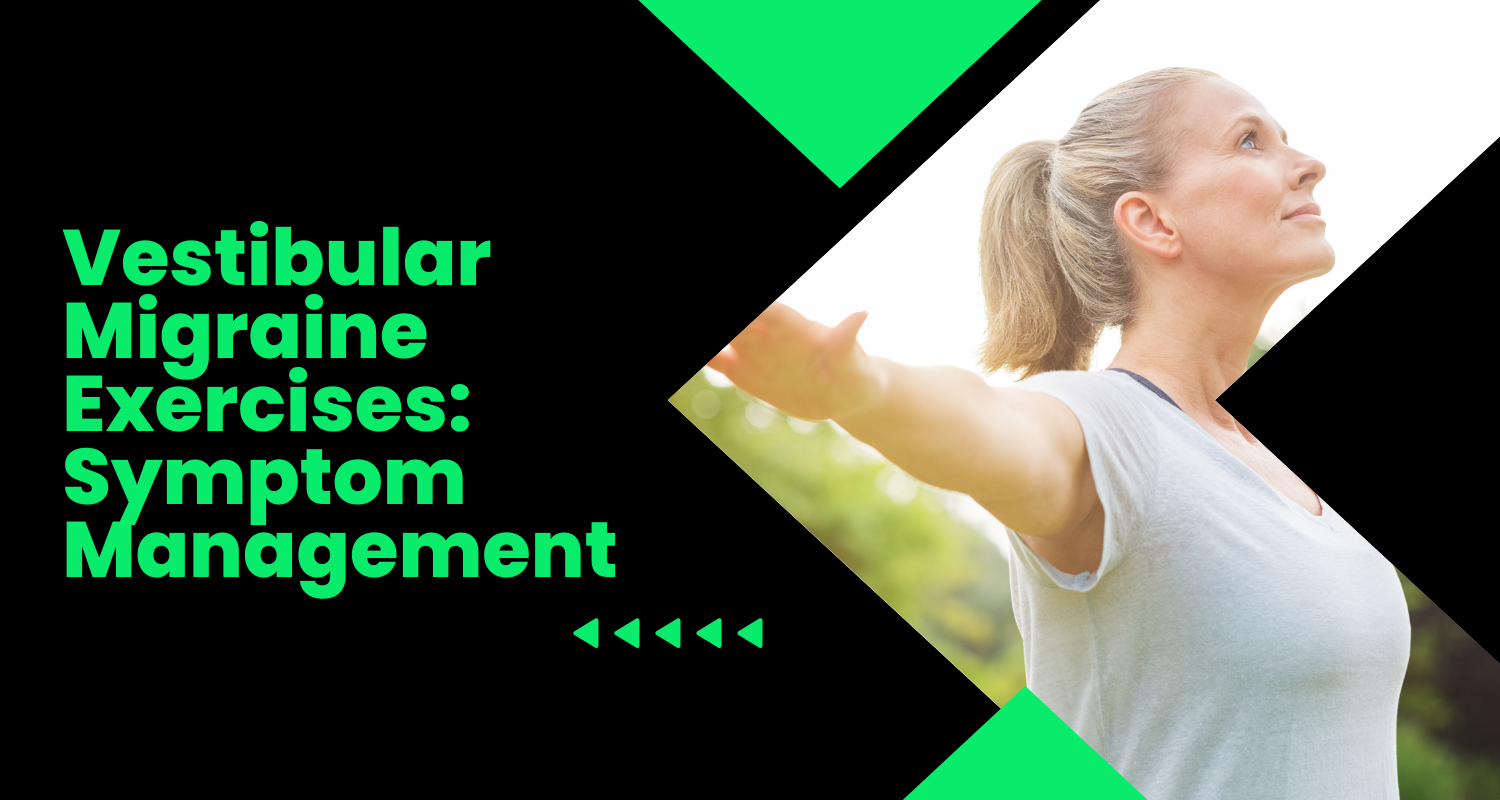Exercises for Vestibular Migraines: Managing Symptoms and Improving Quality of Life

Vestibular migraines are a type of migraine headache that is characterized by vertigo, dizziness, and balance disturbances, often accompanied by visual disturbances or nausea.
While medication is commonly used to manage symptoms, certain exercises and lifestyle modifications can also play a significant role in reducing the frequency and severity of vestibular migraines.
In this article, we'll explore a variety of effective exercises for vestibular migraines to help individuals better manage their symptoms and improve their quality of life.
Understanding Vestibular Migraines
Vestibular migraines are a subtype of migraine headaches that involve dysfunction of the vestibular system, which contributes to balance and spatial orientation. Symptoms of vestibular migraines may include:
- Vertigo or spinning sensations
- Dizziness or lightheadedness
- Imbalance or difficulty walking
- Nausea or vomiting
- Visual disturbances, such as aura or sensitivity to light
Benefits of Exercise for Vestibular Migraines
Regular exercise can offer several benefits for individuals with vestibular migraines:
- Stress Reduction: Exercise can help reduce stress and tension, which are common triggers for migraines.
- Improved Circulation: Physical activity promotes healthy blood flow and circulation, which can help alleviate migraine symptoms.
- Enhanced Mood: Exercise releases endorphins, the body's natural painkillers, which can improve mood and overall well-being.
- Better Sleep: Regular exercise can help regulate sleep patterns and improve sleep quality, which is important for migraine management.
Effective Exercises for Vestibular Migraines
1. Walking
- Walking is a low-impact exercise that can help improve circulation, reduce stress, and promote relaxation.
- Start with short walks and gradually increase the duration and intensity as tolerated.
2. Yoga
- Yoga combines gentle movements, breathing techniques, and relaxation exercises, making it beneficial for managing migraine symptoms.
- Focus on yoga poses that promote relaxation, such as Child's Pose, Forward Fold, and Corpse Pose.
3. Tai Chi
- Tai Chi is a slow and gentle form of exercise that emphasizes balance, coordination, and mindfulness.
- Practice Tai Chi movements that focus on smooth, flowing motions and controlled breathing.
4. Balance Exercises
- Balance exercises can help improve vestibular function and reduce dizziness and imbalance.
- Perform exercises such as standing on one leg, heel-to-toe walking, or balancing on a stability ball or foam pad.
5. Stretching and Relaxation Techniques
- Stretching exercises, such as neck stretches and shoulder rolls, can help relieve tension and stiffness in the muscles.
- Incorporate relaxation techniques, such as deep breathing, progressive muscle relaxation, or guided imagery, to reduce stress and promote relaxation.
Precautions and Considerations
- Start slowly and gradually increase the intensity and duration of exercise to avoid triggering migraines.
- Stay hydrated and take breaks as needed during exercise to prevent overheating and dehydration.
- Listen to your body and stop any exercise that exacerbates migraine symptoms or causes discomfort.
- Consult with a healthcare professional before starting any new exercise program, especially if you have underlying medical conditions or concerns.
Conclusion
While vestibular migraines can be challenging to manage, incorporating regular exercise into your routine can help reduce symptoms, improve quality of life, and enhance overall well-being.
By incorporating exercises that promote relaxation, improve balance, and reduce stress, individuals with vestibular migraines can better manage their condition and enjoy a better quality of life.
Remember to start slowly, listen to your body, and consult with a healthcare professional if you have any concerns or questions regarding exercise and migraine management.
